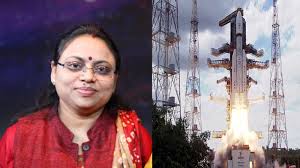As India’s Chandrayaan-3 mission continues its trajectory beyond the Earth’s gravitational embrace, one name resonates through the corridors of ISRO: Ritu Karidhal. A senior scientist at the Indian Space Research Organisation, Karidhal is widely known as the “Rocket Woman of India”—a title she earned not just through landmark missions, but through decades of silent determination and scientific brilliance.
From her early days in Lucknow to her leadership role in one of India’s most ambitious space programs, Karidhal’s story is a quiet revolution in a field long dominated by men.
A Childhood Shaped by Stars and Headlines
Karidhal’s fascination with the cosmos began far from any launch pad. As a schoolgirl in Lucknow, she collected newspaper clippings on space missions by ISRO and NASA, driven by a curiosity that refused to be boxed in. At a time when few girls in small-town India considered space science a viable path, she dreamed boldly—and worked relentlessly.
After completing her master’s in physics from Lucknow University in 1996, Karidhal pursued aerospace engineering at the Indian Institute of Science (IISc), Bengaluru, one of the nation’s top scientific institutions. In November 1997, she joined ISRO, beginning a career that would help reshape India’s place in the global space community.
A Woman Behind Mars and the Moon
Karidhal’s name first entered the national spotlight during the Mars Orbiter Mission (Mangalyaan), where she served as Project Manager and Deputy Operations Director. The 2014 mission made global headlines for placing India’s satellite into Mars’ orbit on its first attempt—an engineering feat achieved at a fraction of the cost of similar international efforts.
The mission, she said later in interviews, wasn’t just a scientific victory—it was personal. “When I saw the first signal received from Mars, I was speechless,” she recalled. “It was a moment of pride for the whole country.”
Now, Karidhal leads another historic effort: Mission Director for Chandrayaan-3, India’s third lunar exploration mission. The spacecraft aims to land near the Moon’s south pole, a site of immense scientific interest and strategic importance. The mission is a high-stakes test of India’s deep space capability and self-reliant ambition.
Inspiration Beyond Orbit
Her professional milestones are matched by the symbolic weight she carries as one of ISRO’s most visible female leaders. In a conservative culture where women in science often remain under-recognized, Karidhal’s ascent is a model of perseverance and quiet leadership.
She has been honored with several accolades, including:
- ISRO Young Scientist Award
- ISRO Team Award
- ASI Team Award
- Aerospace Woman Award from the Society of India Aerospace Technology and Industries
Yet, she speaks less of titles and more about mentorship, often addressing students, especially girls, to pursue STEM careers with confidence. “You don’t need to be extraordinary,” she once told a group of aspiring engineers. “You just need extraordinary determination.”
The Sky Is Not the Limit
Karidhal represents a new face of Indian science—one rooted in modest beginnings but aimed at the stars. Her leadership of Chandrayaan-3 is not just about exploring lunar terrain, but about expanding the boundaries of belief—in what India can do, and what women in India can lead.
As ISRO pushes forward with future missions to Venus and beyond, Ritu Karidhal will likely be at the helm—not because she seeks the spotlight, but because she’s earned it


